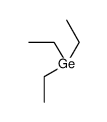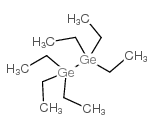Manganocene
Modify Date: 2025-08-21 17:43:30

Manganocene structure
|
Common Name | Manganocene | ||
|---|---|---|---|---|
| CAS Number | 73138-26-8 | Molecular Weight | 185.12400 | |
| Density | 1.49 g/cm3 | Boiling Point | 245ºC | |
| Molecular Formula | C10H10Mn | Melting Point | 175ºC(lit.) | |
| MSDS | N/A | Flash Point | 125 °F | |
| Name | bis(cyclopentadienyl)manganese |
|---|---|
| Synonym | More Synonyms |
| Density | 1.49 g/cm3 |
|---|---|
| Boiling Point | 245ºC |
| Melting Point | 175ºC(lit.) |
| Molecular Formula | C10H10Mn |
| Molecular Weight | 185.12400 |
| Flash Point | 125 °F |
| Exact Mass | 185.01600 |
| LogP | 2.75900 |
| Storage condition | Refrigerator (+4°C) + Flammables area |
|
Section 1: Product Identification Chemical Name:Bis(cyclopentadienyl)manganese, 98+% (Manganocene) CAS Registry Number:73138-26-8 Formula:(C5H5)2Mn EINECS Number:none Chemical Family:metallocene Synonym:none
Section 2: Composition and Information on Ingredients IngredientCAS NumberPercentACGIH (TWA)OSHA (PEL) Title Compound73138-26-8100%0.2mg/m3 (as Mn)5mg/m3 (as Mn- Section 3: Hazards Identification May be irritating to eyes, skin and respiratory tract. May be harmful if swallowed. Some manganese Emergency Overview: compounds are known to affect the central nervous system. Possible risk of irreversible effects. Primary Routes of Exposure:Inhalation and Ingestion Eye Contact:May cause slight to mild irritation of the eyes. Skin Contact:May cause slight to mild irritation of the skin. Dust may be irritating to the nose, mucous membranes and respiratory tract, and cause chronic health Inhalation: problems. Ingestion:No information available on the physiological effects of ingestion. Acute Health Affects:May be irritating to skin, eyes and respiratory tract. Prolonged exposure to manganese containing dust may produce manganese pneumonitis and manganese Chronic Health Affects:poisoning. Symptoms include sleepiness, weakness and emotional disturbances. Equivocal studies have shown manganese may decrease fertility in men. Possible risk of irreversible effects. NTP:No IARC:No OSHA:No SECTION 4: First Aid Measures Immediately flush the eyes with copious amounts of water for at least 10-15 minutes. A victim may need Eye Exposure: assistance in keeping their eye lids open. Get immediate medical attention. Wash the affected area with water. Remove contaminated clothes if necessary. Seek medical assistance if Skin Exposure: irritation persists. Remove the victim to fresh air. Closely monitor the victim for signs of respiratory problems, such as difficulty Inhalation: in breathing, coughing, wheezing, or pain. In such cases seek immediate medical assistance. Seek medical attention immediately. Keep the victim calm. Give the victim water (only if conscious). Induce Ingestion: vomiting only if directed by medical personnel. SECTION 5: Fire Fighting Measures Flash Point:no data Autoignition Temperature:no data Explosion Limits:no data Extinguishing Medium:carbon dioxide or dry powder If this product is involved in a fire, fire fighters should be equipped with a NIOSH approved positive pressure Special Fire Fighting Procedures: self- contained breathing apparatus and full protective clothing. Hazardous Combustion andIf involved in a fire this material may emit irritating fumes. Decomposion Products: Unusual Fire or Explosion Hazards: Highly flammable. Dust may form explosive mixtures with air. SECTION 6: Accidental Release Measures Small spills can be mixed with vermiculite, sodium carbonate or other suitable non combustible adsorbent and Spill and Leak Procedures: swept up. SECTION 7: Handling and Storage Keep material in a tightly sealed container. Prolonged exposure to the air or moisture will result in degradation Handling and Storage: of the product. Handle and store material under an inert atmosphere of nitrogen or argon. SECTION 8: Exposure Controls and Personal Protection Eye Protection:Always wear approved safety glasses when handling a chemical substance in the laboratory. Skin Protection:Wear protective clothing and gloves. Consult with glove manufacturer to determine the proper type of glove. Ventilation:Material may form a fine dust. If possible, handle the material in an efficient fume hood. If ventilation is not available a respirator should be worn. The use of respirators requires a Respirator Respirator: Protection Program to be in compliance with 29 CFR 1910.134. Ventilation:Material may form a fine dust. If possible, handle the material in an efficient fume hood. Additional Protection:No additional protection required. SECTION 9: Physical and Chemical Properties Color and Form:brown xtl. Molecular Weight:185.13 Melting Point:172-173 °C Boiling Point:245 °C Vapor Pressure:100-130° (0.0001mm) Specific Gravity:no data Odor:none Solubility in Water:reacts with water SECTION 10: Stability and Reactivity Stability:air sensitive, moisture sensitive Hazardous Polymerization:no hazardous polymerization Contact with moisture and oxygen. Keep away from heat and ignition sources including open flame and Conditions to Avoid: electrostatic discharge. Incompatibility:Air, oxidizing agents halogens, protic reagents Decomposition Products:carbon dioxide, carbon monoxide, organic fumes, and manganese oxide SECTION 11: Toxicological Information RTECS Data:No information available in the RTECS files. Carcinogenic Effects:No data available Mutagenic Effects:Possible mutagen (as Mn) Tetratogenic Effects:No data available SECTION 12: Ecological Information Ecological Information:No information available SECTION 13: Disposal Considerations Disposal:Dispose of according to local, state and federal regulations. SECTION 14: Transportation Shipping Name (CFR):Flammable solids, Organic, N.O.S. Hazard Class (CFR):4.1 Additional Hazard Class (CFR):NA Packaging Group (CFR):II UN ID Number (CFR):UN# 1325 Shipping Name (IATA):Flammable solid, Organic, N.O.S. Hazard Class (IATA):4.1 Additional Hazard Class (IATA):NA Packaging Group (IATA):II UN ID Number (IATA):UN# 1325 SECTION 15: Regulatory Information TSCA:Not listed in the TSCA inventory. SARA (Title 313):See Category code N450 for reporting. Second Ingredient:none SECTION 16 - ADDITIONAL INFORMATION N/A |
| Hazard Codes | Xi: Irritant; |
|---|---|
| Risk Phrases | R36/37/38 |
| Safety Phrases | 26-36 |
| RIDADR | UN 1325 4.1/PG 2 |
| WGK Germany | 3 |
| HS Code | 29310099 |
| Bis(cyclopentadienyl)manganese,(Manganocene) |
| DICYCLOPENTADIENYL MANGANESE |
| MANGANOCENE |

![[U(N(CH2CH2NSiMe3)3)(THF)2][BPh4] structure](https://image.chemsrc.com/caspic/300/1333241-09-0.png)
![[(U(N(CH2CH2NSiMe3)3))2(μ-O)] structure](https://image.chemsrc.com/caspic/293/1333241-14-7.png)
 CAS#:12079-65-1
CAS#:12079-65-1 CAS#:1188-14-3
CAS#:1188-14-3 CAS#:993-62-4
CAS#:993-62-4 CAS#:7440-43-9
CAS#:7440-43-9